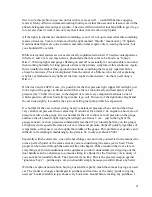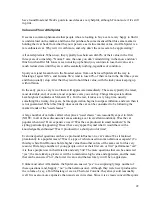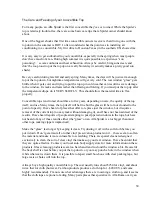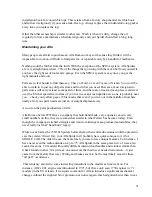
22
have found Road and Track
“
s guide to used classics very helpful, although I
“
m not sure if it
“
s still
in print.
Value and Your Alfa Spider
It seems a common phenomena that people who are looking to buy a car are very happy to find it
is undervalued on the market, and then after purchase become incensed that this same market is
holding their car back from what they now perceive as its true market value. An Alfa Spider is a
rare enthusiast car. Why isn
“
t it worth more, and why don
“
t the cars seem to be appreciating?
All cars depreciate. When new, they typically lose between 40-60% of their value in the first
three years of ownership.
”
Normal
„
cars, the ones you don
“
t mind driving in the snow and don
“
t
flinch in when Old Mr. Jones is seen cruising up behind you, continue to lose their value at a
much reduced rate until they are worth essentially nothing, regardless of condition.
Sporty cars (and I mean this in the broadest sense, from our beloved Spiders all the way to
Mustangs, Jaguar XJS
“
s, and Lumina SS
“
s) tend to lose 40% of their value in the first three years
and then (usually) stop. After that they tend to hold their value, with the lucky ones keeping up
with inflation.
In the early years, a very few of them will appreciate immediately. These are typically the rarest,
most desirable, and, of course, most expensive cars you can buy. Things like special edition
Lamborghini Countachs or McLaren F1s. For the rest, it takes a very long time, usually
something like twenty-five years, before appreciation begins to surpass inflation, and even then it
is not guaranteed. When this finally does occur the car can be considered to be following the
market trends of the
”
used classics
„
.
A large number of variables affect what price a
”
used classic
„
can reasonably expect to fetch
(NOTE: in all of these discussions I am assuming a car in excellent condition). Was the car
popular when new? How expensive was it? Was the car produced in small numbers? Is the
styling particularly appealing? Does it have any appeal beyond what it would have with a
knowledgeable enthusiast? Was it produced for a short period of time?
Even unexpected questions can have a profound influence on a car
“
s value. Was it featured
prominently in a popular movie? Was it a type of vehicle used in some nefarious escapade? (To
this day white Ford Broncos hold a higher value than other colors of the same car for this very
reason.) Did a large number of young people own it as their first car, or first
”
performance
„
car?
Are those people now in their late 40s and early 50s? The more questions that can be answered
”
yes
„
, the more likely a given car will be to maintain a high value and appreciate, and the more
that can be answered
”
no
„
, the lower its value and the less likely it will be to appreciate.
Unlike most other Alfa models, the Spider can answer
”
yes
„
to a surprisingly large number of
these questions (and, happily,
”
no
„
to the nefarious one). Although they were never produced in
the volume of, say, a Ford Mustang or even a Chevrolet Corvette, they always sold reasonably
well. It was also more expensive than most cars in its class. Since it is a classic convertible sports
















































